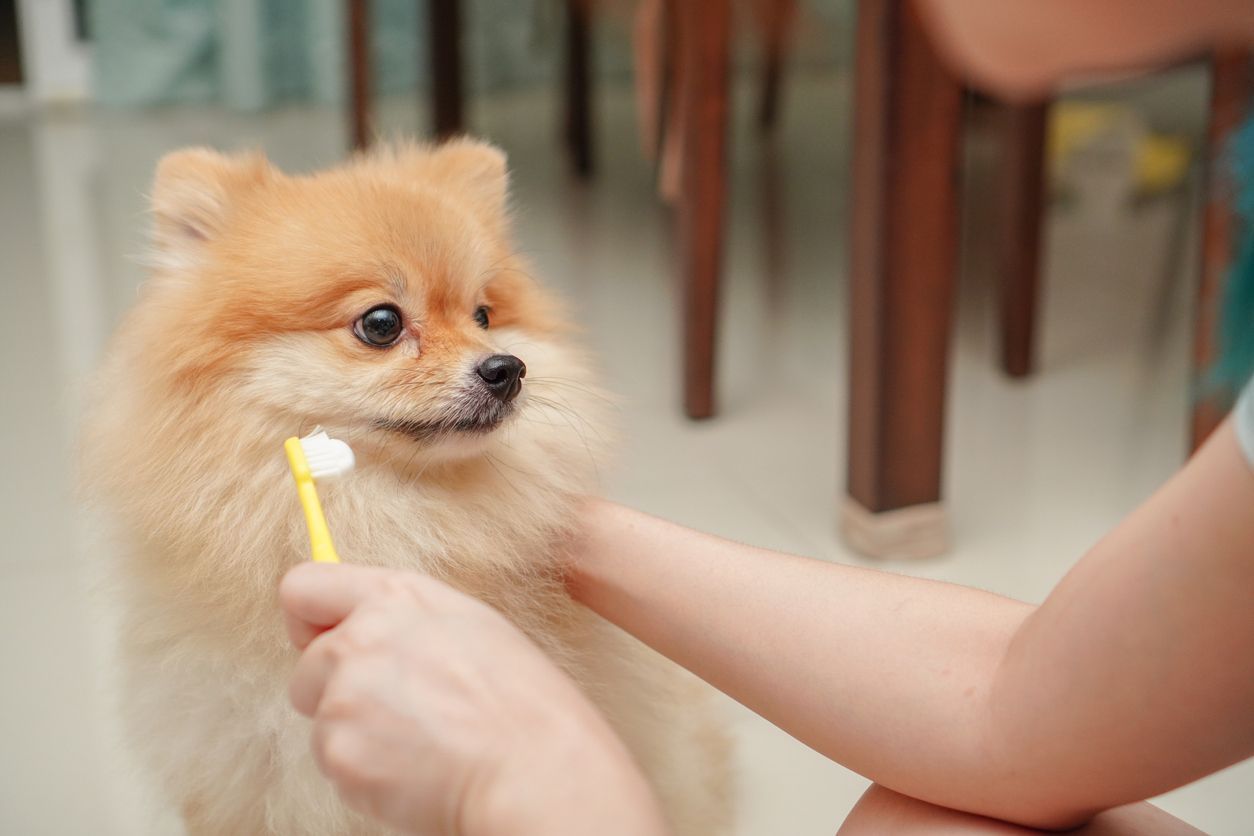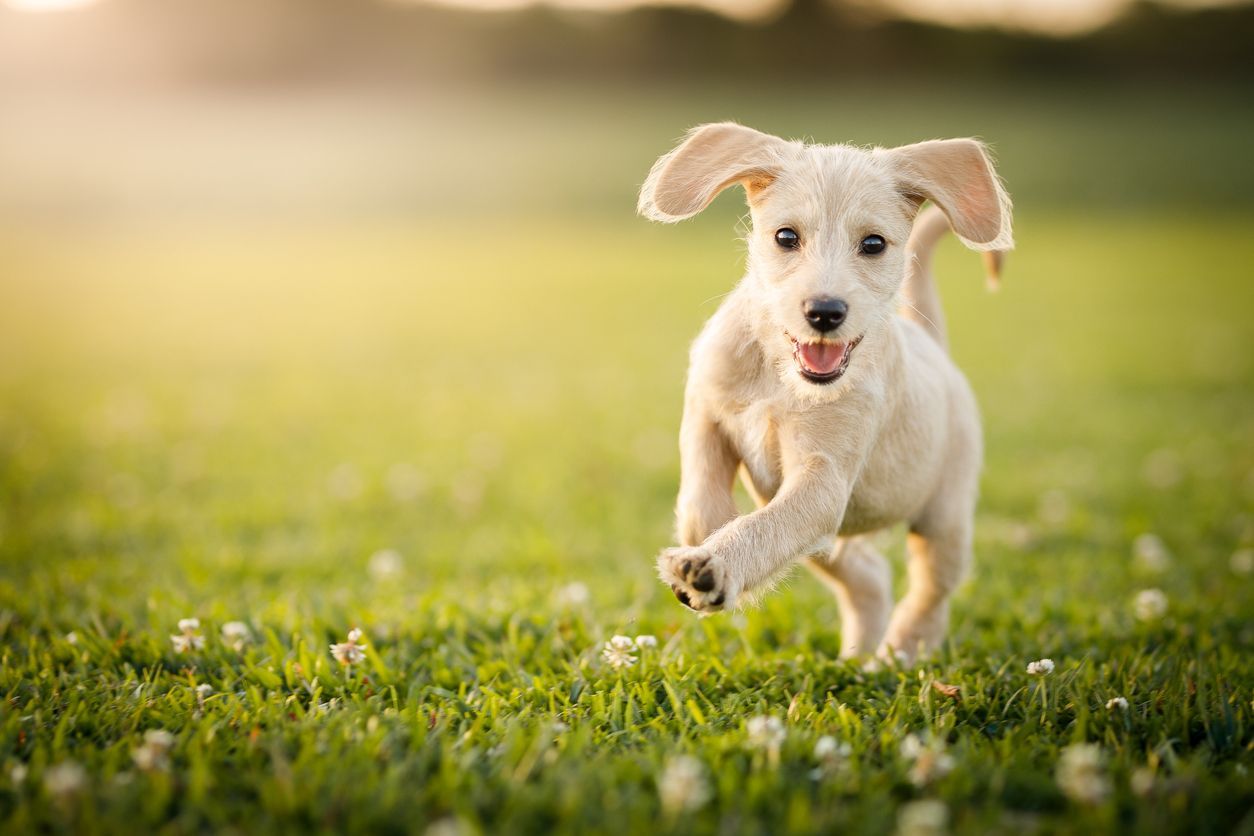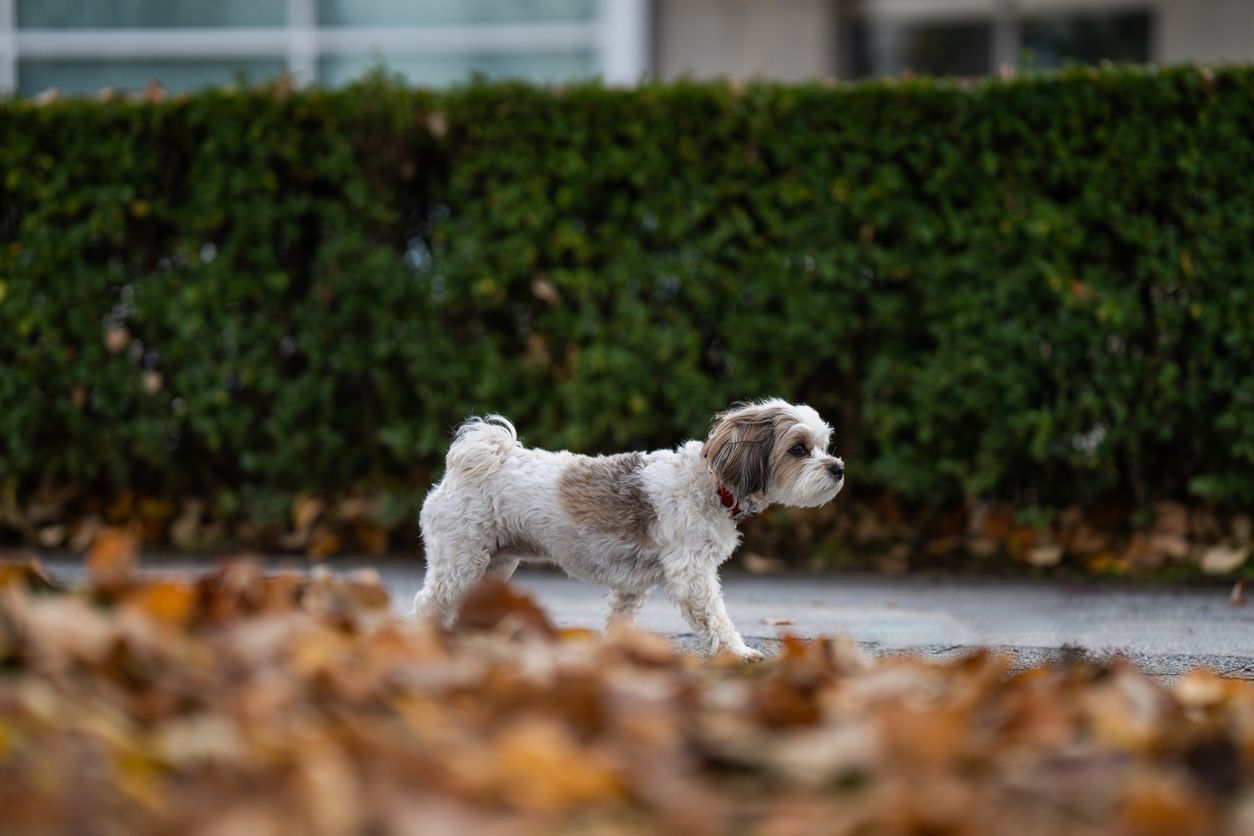The importance of dental hygiene in pets

Dental disease is one of the most common health conditions in both dogs and cats. Many pet owners are unaware their pets have dental problems until they are pointed out by a veterinarian. Read on to learn
- What are the symptoms of poor oral health in my pet?
- What are the causes of dental issues in pets?
- How can I prevent poor dental health?
- How is dental disease in animals treated?
- Should I get dental food or treats for my pet?
- How can I provide good oral hygiene for my pet?
It’s important for pet parents to regularly check and brush their pet’s teeth and watch for signs of poor dental health. Regular check-ins with a vet and professional cleanings are also crucial for a pet’s overall well-being.
What are the symptoms of poor oral health in pets?
Poor oral health and dental disease are common problems in pets. It is reported that by the age of two, up to 80% of dogs suffer from poor oral health and dental disease. Dental disease is also prevalent in cats, with up to 90% of cats over the age of four experiencing poor oral health. Pets with dental problems have symptoms often overlooked or unnoticed by pet owners. This is often due to the symptoms slowly setting in rather than suddenly appearing. Symptoms of poor dental health in pets can include:
- Prolonged bad breath (not from eating something smelly)
- Buildup of white, yellow, or brown tartar on teeth
- Red, inflamed, or bleeding gums
- Broken or loose teeth
- Blood in the mouth or saliva
- Pain in the mouth or favoring one side
- Excessive drooling
Most animals with severe dental disease eat just fine, so it’s a mistake to assume your pet has healthy teeth if they have a normal appetite. Dental disease can also be a contributing factor to chronic ear or eye infections and kidney or liver disease. Healthy teeth should be white and clean with pink gums and fresh breath.
What are some causes of poor dental health in pets?
There are many contributing factors to poor dental health in pets. They can include one or more of the following:
- Genetics
- Poor home dental care
- Inadequate professional dental care
- Broken teeth or oral injuries
- Rare side effects of medications or other diseases
Many breeds of dogs and some breeds of cats are genetically predisposed to have poor dental health. Unerupted teeth, an improper bite, and tooth overcrowding are a few common genetic factors that contribute to poor dental health. Improper or lack of teeth brushing at home is also a major contributor to dental disease in dogs and cats.
What is dental disease?
Dental disease is an umbrella term for many diseases and conditions of the teeth, gums, jaw, and soft palate. It can be categorized in different ways, and different diseases and disorders require different treatments.
Gum disease
Gum disease in dogs and cats includes gingivitis and periodontitis. These conditions are caused by a buildup of bacteria along the gumline, causing inflammation. Left untreated, gum disease can cause tooth loss due to inflammation of the supportive tissue around the tooth and surrounding bone. Prevention of gum disease involves regular brushing at home and professional dental cleanings.
Endodontic disease
Endodontic disease occurs when the inside of the tooth is damaged due to injury, enamel abnormality, and tooth decay. This results in painful teeth and tooth loss. Endodontic disease is sometimes diagnosed by a veterinarian during a routine dental exam, but it’s also common for it to go undetected until your pet has dental X-rays taken during a professional cleaning.
Developmental abnormalities
A puppy or kitten can be born with genetic or developmental abnormalities in their teeth, gums, jaw, or soft palate. In addition to contributing to dental disease, some of these conditions affect a pet’s comfort or ability to eat, while others are purely aesthetic. Examples include unerupted teeth, cleft palate, improper bite (malocclusion), and enamel defects.
How can dental disease be prevented in pets?
Daily brushing is the best way to prevent dental disease. However, even with the best at-home brushing our pets require professional dental cleanings just like we do. Yearly wellness checkups that include dental exams are recommended for all dogs and cats. “Evaluating oral health is one critical component of an annual wellness exam,” explains Dr. Jo Myers, a Vetster veterinarian. “Many pet owners do not realize their pet is experiencing early or even advanced stages of dental disease because their pets are behaving just fine at home.”
How do I brush my pet’s teeth?
To brush your dog or cat’s teeth, use a soft-bristled human toothbrush, pet toothbrush, finger brush, or a damp washcloth to brush or wipe your pet’s teeth. Most plaque and tartar accumulates on the easily reached surfaces of the teeth near the inside of the cheeks and lips, so you’ll still be effective if you focus your efforts there. Use circular motions on each tooth, focusing around the gumline. Pet toothpaste isn’t necessary as the friction of the brush or cloth on the teeth is what removes most of the plaque. However, tasty flavored toothpaste can help entice your pet. Avoid human toothpastes as they are not meant to be swallowed and may contain xylitol, which is toxic to pets.
It’s best to start training your pet young and incorporate tooth brushing into their daily routine. Remember to act like the process is fun and that you enjoy it. Your pet will likely catch on and may come to enjoy the routine. Rewarding with a tasty treat after each brushing can help as well.
How is dental disease treated by a veterinarian?
Treatment for dental disease in pets varies depending on the type and stage of disease. Plaque or tartar buildup and loose, broken, or decaying teeth can be removed by a veterinarian, or you may be referred to a dental specialist for tooth-sparing procedures like root canals. General anesthesia for a thorough oral examination with complete dental X-rays under anesthesia is necessary to identify the extent of dental disease and determine the best plan for treatment. Some forms of dental disease can be reversed and treated through basic professional cleanings, while others may require surgery or antibiotics for infections and abscesses.
Does my pet need regular dental cleanings?
Dental cleanings under anesthesia at a vet clinic are the only way to remove hardened tartar on the tooth surface and plaque buildup below the gumline. The veterinarian performing the cleaning can also check for loose or broken teeth that may not be visible to the owner, especially if they are towards the back of the mouth. X-rays can also be used to check tooth root health that cannot be seen from a visual oral exam.
Every pet is different. Annual dental exams are recommended for all pets and your veterinarian can suggest a dental cleaning schedule that works best for you and your pet. Dogs and cats who are more likely to develop dental disease may require more cleanings than others. Regular professional cleanings are recommended for dogs and cats based on your veterinarian’s advice.
Is anesthesia safe for my pet?
Professional veterinary dental cleanings involve the use of anesthesia. With any medical procedure and use of anesthesia, there are risks. Veterinarians take steps to minimize these risks before and during the procedure by doing pre-anesthetic diagnostic screening and closely monitoring your pet throughout the process. The use of anesthesia allows your vet to scale your pet’s teeth as well as remove any damaged teeth in the safest manner possible, for both them and your pet. Overall, the risks of anesthesia are far less than the risks of untreated dental disease or injury caused by movement during the cleaning.
Are dental treats for pets effective?
Dental treats, food, water additives, and dental chew toys are not a replacement for regular brushing at home or professional dental cleanings. Dental treats and products with the Veterinary Oral Health Council (VOHC) seal are the only products on the market that have been thoroughly tested for safety and efficacy. Other products are not well-regulated or tested. VOHC-tested products can help prevent the buildup of plaque and are especially effective when used to delay the reaccumulation of tartar after a professional dental cleaning.
How can I provide good oral hygiene for my pet?
In addition to complying with your veterinarian’s recommendations for professional dental cleanings under anesthesia, brushing at home is the best way to provide good dental care for your pet. Brush your pet’s teeth at least two to three times a week, but daily is best. Routinely check your pet’s teeth and gums for plaque or tartar buildup, injuries, or inflammation. Remember, it’s not normal for your pet to have bad breath. Annual dental wellness checkups and regular cleanings are the best measures to keep your pet’s mouth healthy and clean. Always contact your vet if you suspect dental issues are developing and follow their advice on what is best for your pet. If you have any questions about your pet’s dental health, you can talk to an online vet on Vetster.
FAQ - The importance of dental hygiene in pets
Why is pet dental health important?
Poor dental health can lead to shortened life expectancy, pain, and health conditions, such as infections and kidney disease. You can prevent dental disease and provide good oral health for your pet with regular brushing at home and wellness visits with your veterinarian.
How can I get plaque off of my dog’s teeth?
Plaque naturally builds up on the teeth and around the gumline day to day. Regular brushing at home removes plaque and prevents it from hardening into tartar. Use a toothbrush or damp cloth to brush your dog’s teeth in small circular motions to remove the plaque.
How often do cats need their teeth cleaned?
It’s important for cat owners to brush their cat’s teeth at least twice a week, though daily brushing is best. Yearly wellness checks with a vet will ensure your cat’s teeth are healthy and your vet can recommend a professional cleaning schedule that is best for your cat.
How do I keep my pet’s teeth clean without brushing?
Unfortunately, there is little we can do as pet owners to keep our pet’s teeth clean at home without regular brushing. Dental treats can help prevent plaque from building up, but cannot remove plaque or hardened tartar.




